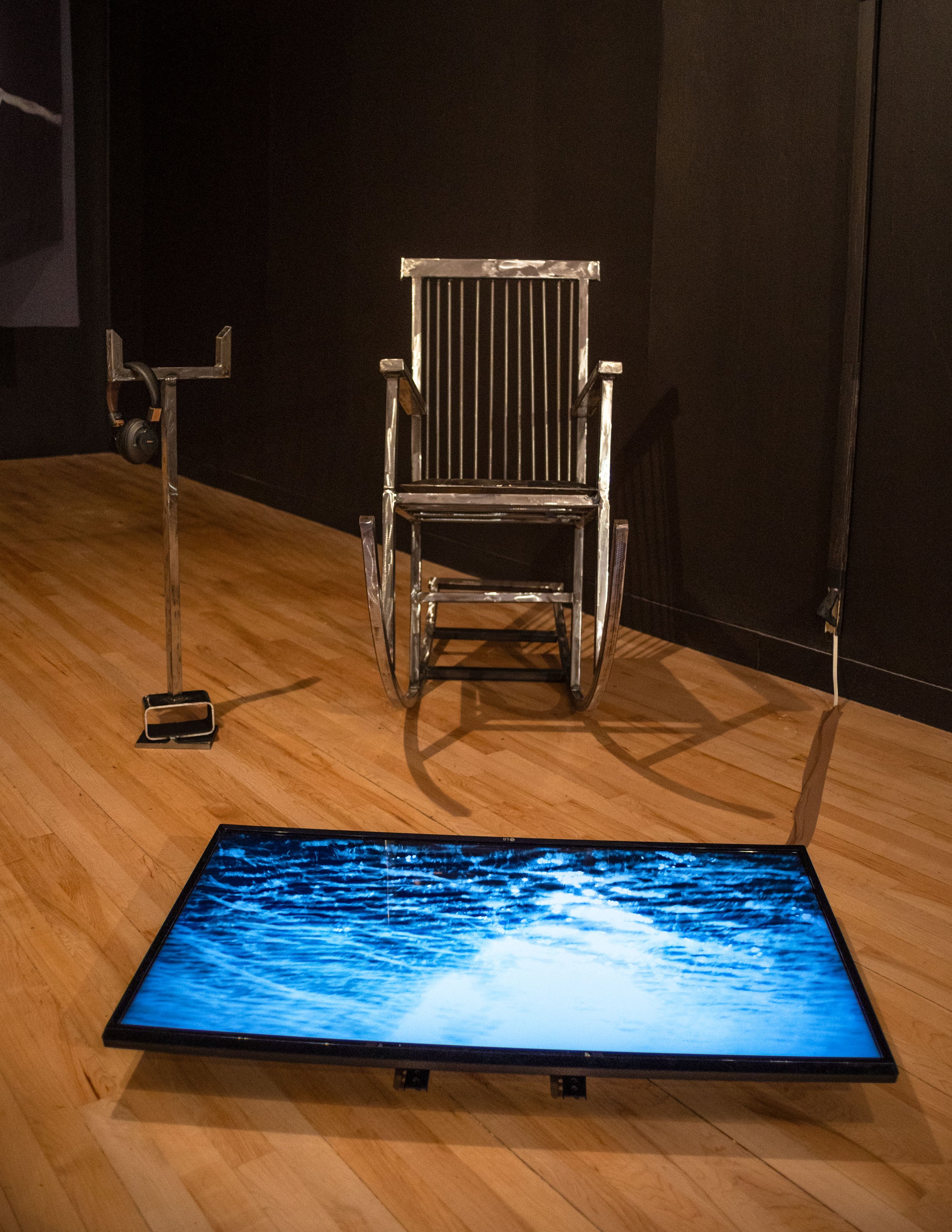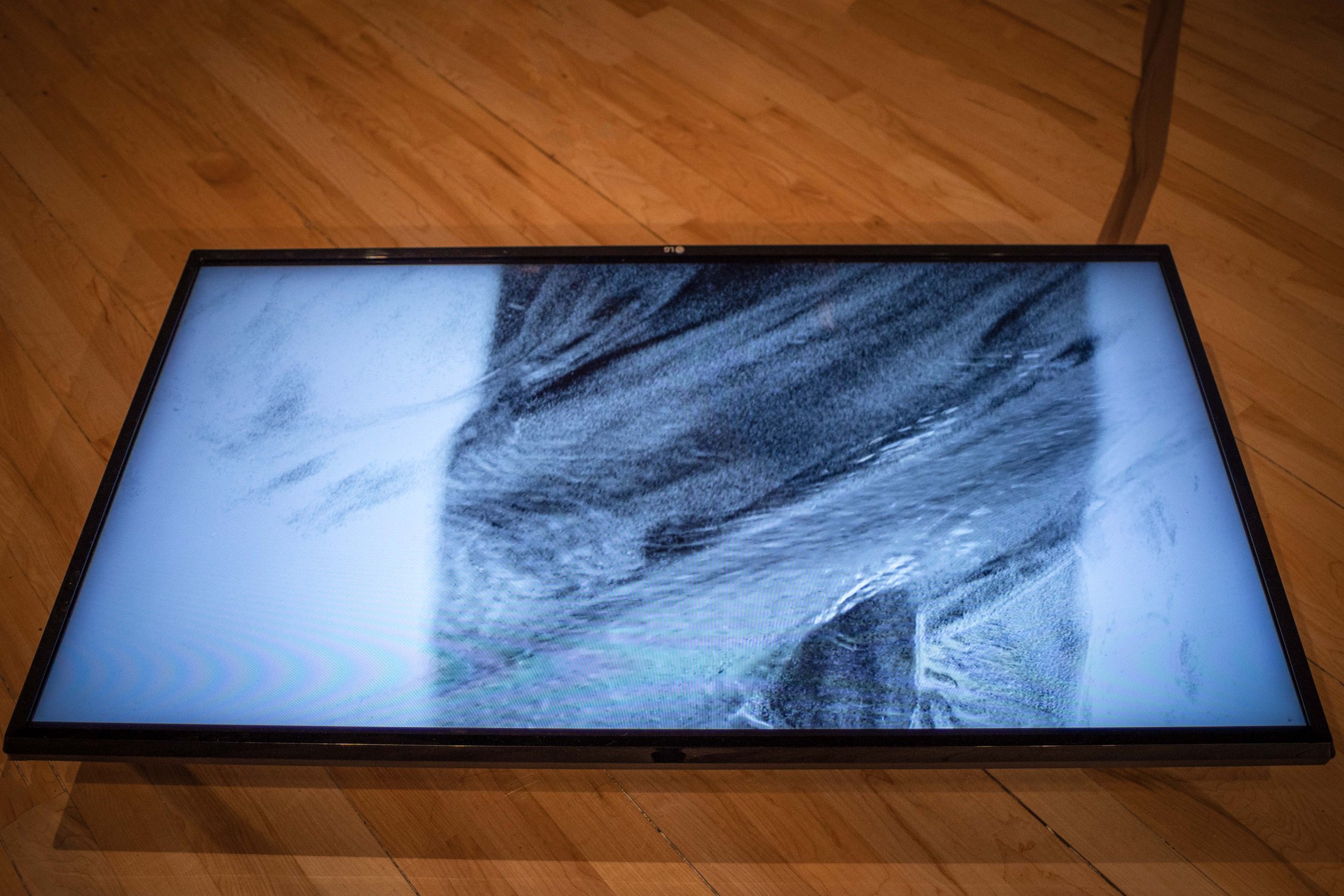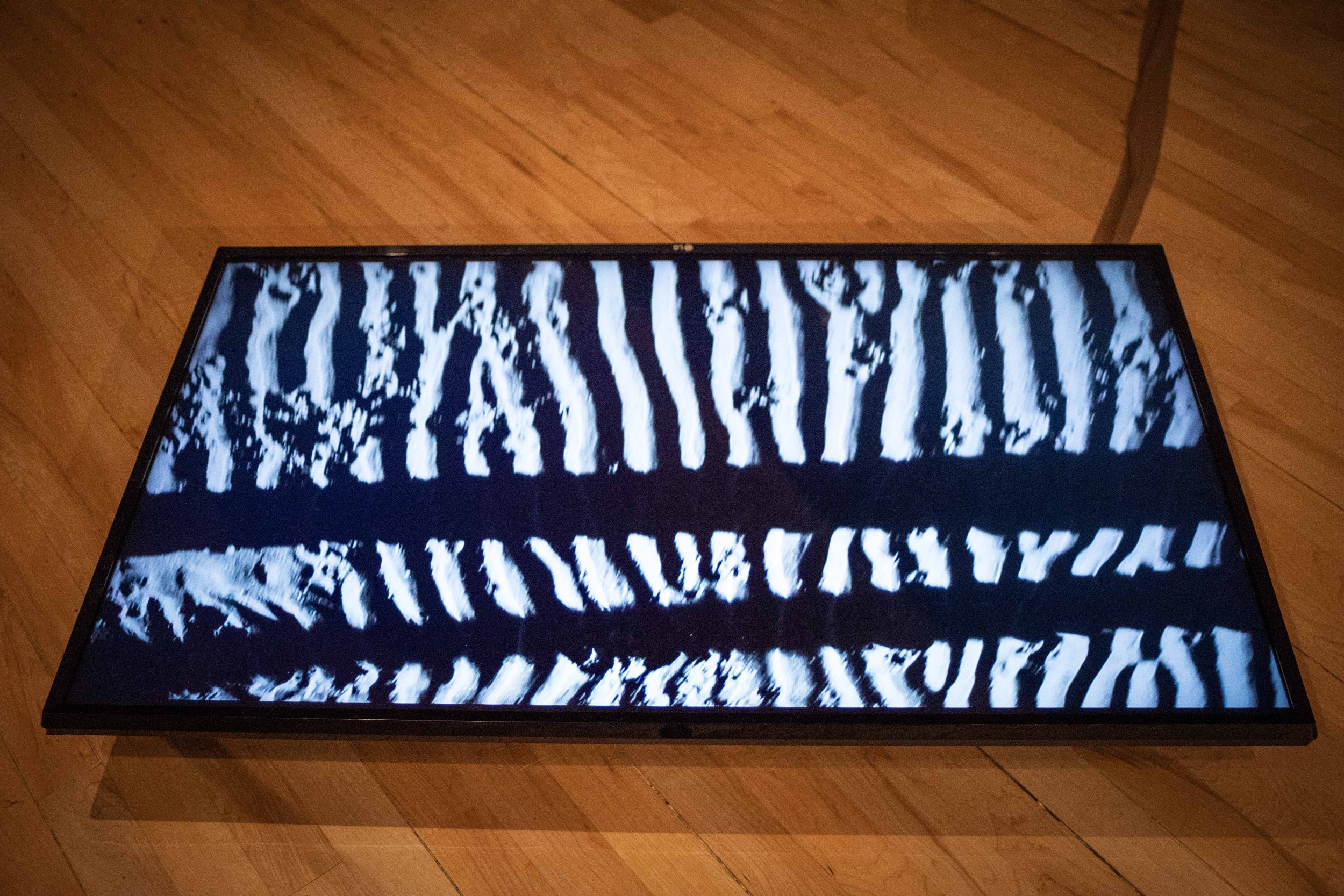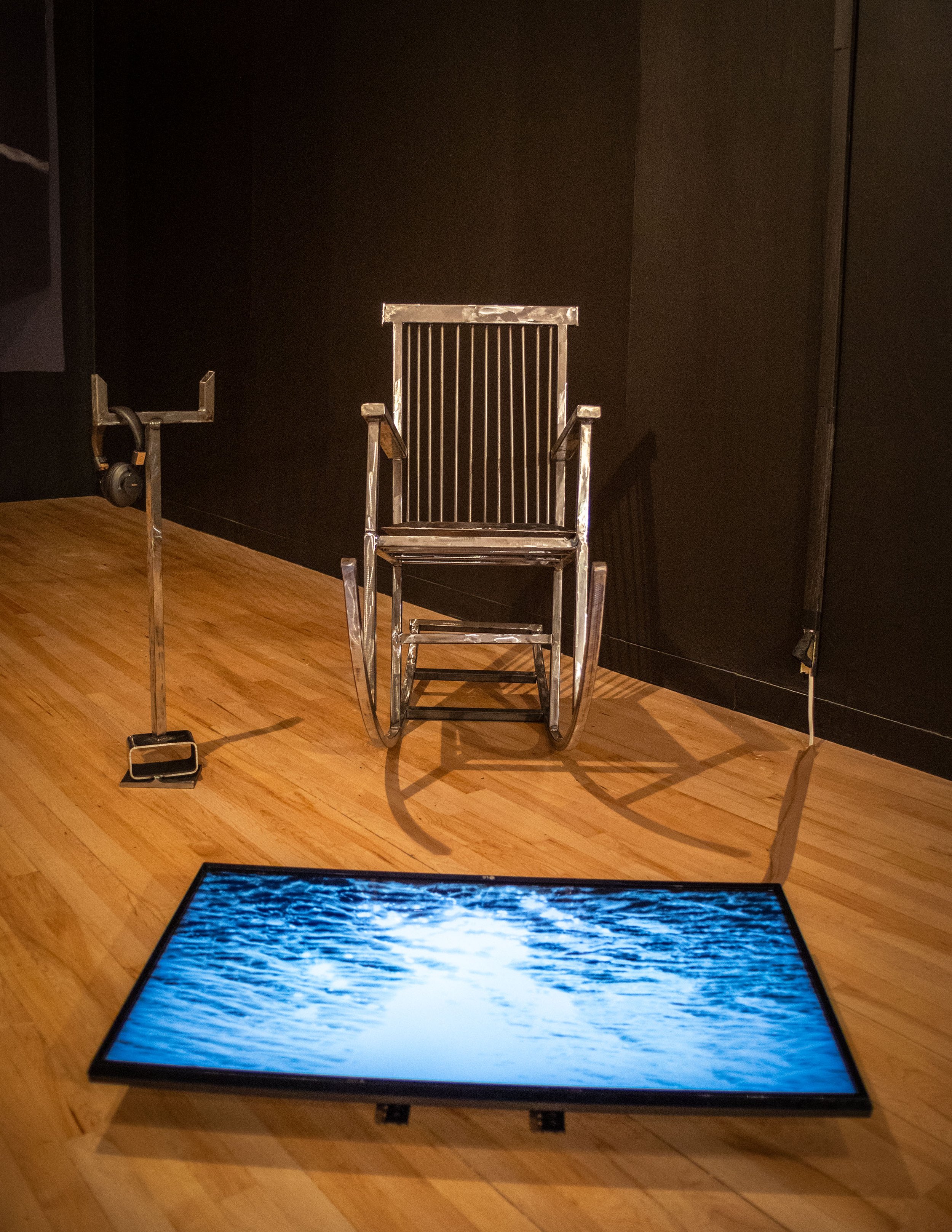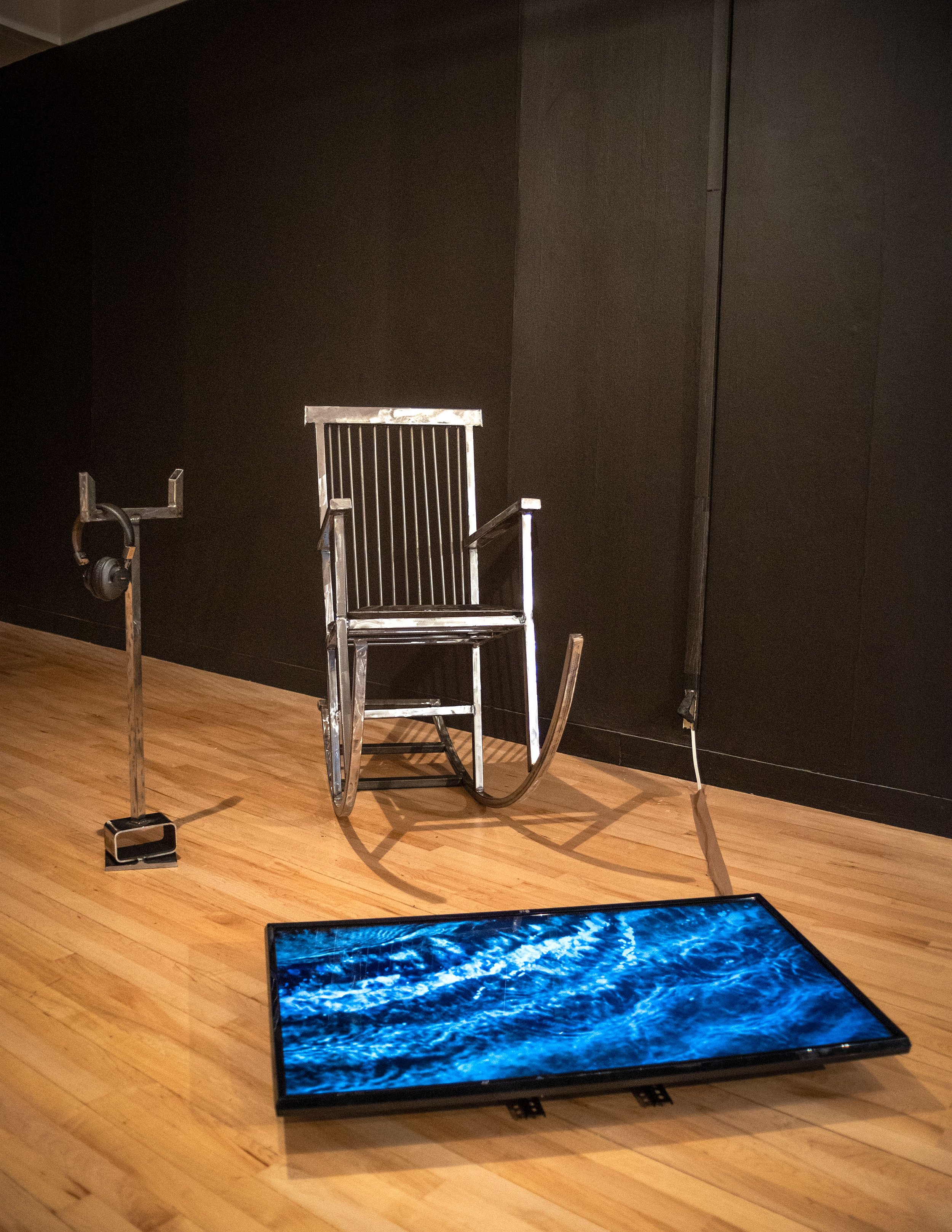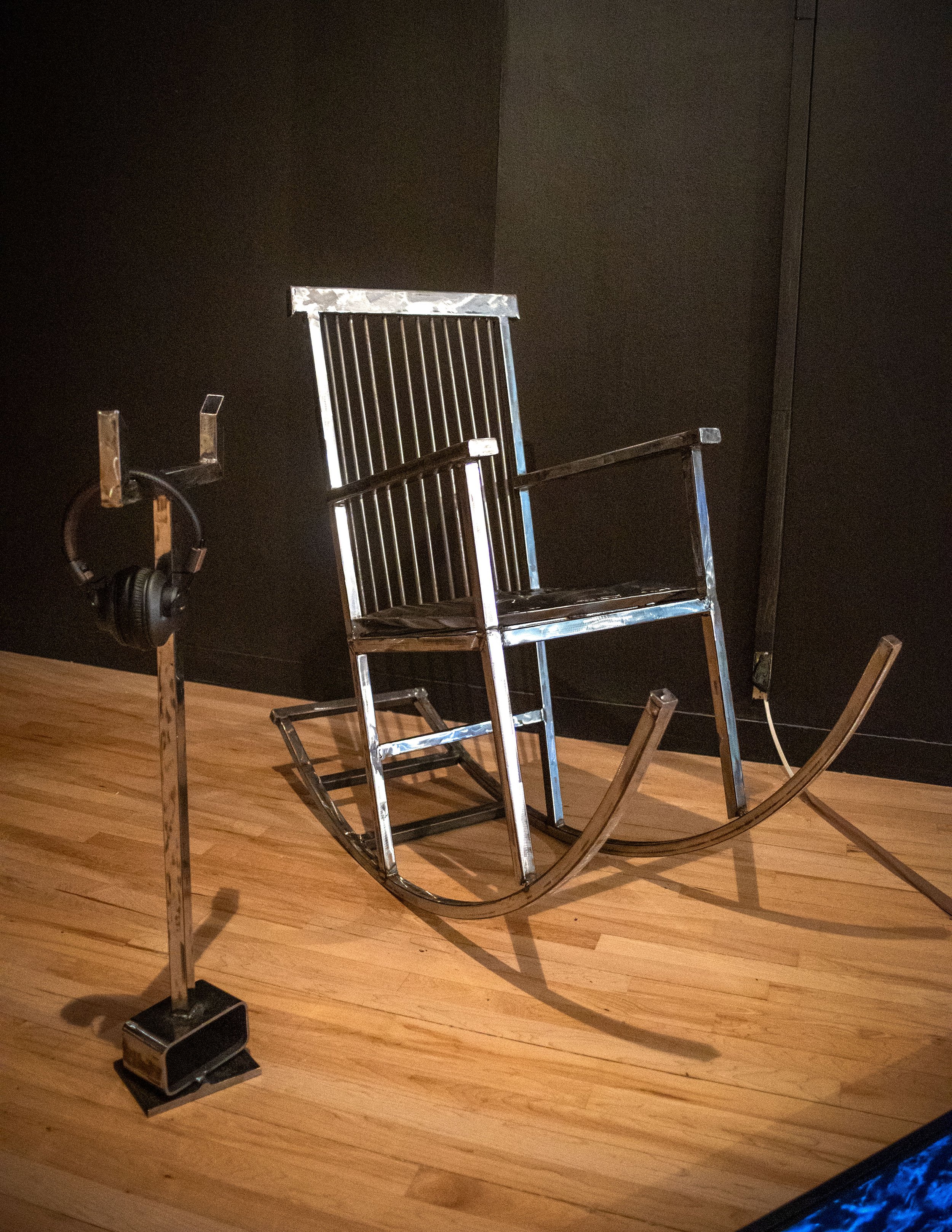The title of this piece is At Birth the Dance Began. Its thesis focuses on therapy and healing and dealing with living in a late capitalist, society how that how we rationalize our relationship with nature, and to ourselves and to each other, and ever eerie presence of the knowledge that something feels a little bit off that something feels a little bit unethical or immoral, just participating in this way of life within the U.S.A.
The first piece of the project has culminated into three different parts. One is a steel rocking chair to me, rocking chairs, represent time, passing something, therapeutic and self, soothing about the rocking the back-and-forth movement of the chair, the repetition, and also the act of sitting down is somewhat relaxing as gravity is no longer pushing so hard on your feet, you get a small break. The chair is also not sedentary; it's able to move, but only one type of movement: when you go forward, you always have to swing back. I also decided to make it out of steel because this felt more industrial and I wanted to give light to this separation that I feel between a lot of natural objects that we use in our day to day, lives such as wood for rocking chairs I feel like so much of what we interact with is made of steel so and other more hardened metals, and so kind of having this object that is used in a lot of people for comfort, adding an industrial element. That’s seemingly void of a lot of life, yet provides a calming effect to those that interact with it.
The second component is a video screen, which is on the floor in front of the rocking chair. Playing on the screen is a video of walking and observational videos of the natural world. It’s footage that I have taken with a camera of me walking around different places. The inspiration behind the walking is and a lot of this project is EMDR therapy, which stands for Eye Movement Desensitization Reprocessing therapy. This type of therapy is used to help patients heal from traumatic experiences through being bilaterally stimulated, usually by visual light that
moves from left to right repetitively, and sound that does the same and sometimes a physical component is added as well where patients are holding buzzers that have the same movement. This is all connected and it’s all moving at the same rate, basically the idea is that bilateral stimulation helps patients to reprocess traumatic memories, and basically create new neural connections and therefore beliefs about themselves that stem from these traumas, so that the traumatic event is less traumatic and less triggering. The woman that founded this type of therapy got the idea when she was taking walks. She noticed that outside she would be looking kind of from left to right a lot and it was really helping her process what she was thinking about; memories, trauma and it really helped with her mood. She found that it was easier to think about these things and that she was having healthier ways of thinking because of this eye movement that walking caused. Now in a therapeutic setting, it is different. There’s only a beam of light going from left to right, the people aren’t going on walks, and the headphones have just a beep that goes back-and-forth. I wanted to stay true to the woman that found this type of therapy and to have videos that I have taken of myself walking so that participator would be getting bilaterally stimulated by looking at the screen and they have the eye movement that is much more similar to walking than just kind of back-and-forth.
The third component of this project is a sound piece. All of the sounds I recorded myself, doing quite a bit of field recording. The sound piece has a lot of natural sounds with inescapable added elements of, of course the human world film out of kind of noise pollution, that we’ve created that I’ve saved into natural landscapes by machines so our relationship with nature is always guided also, by machines in this life, they become inseparable. There is also the sound of my breathing and vocalizations. These are all made into a stereo file which has elements only
occurring in one ear or the other at certain times to mimic the bilateral stimulation, done very subtly so the participant is not necessarily aware they are experiencing this type of stimulation.
The fourth component is the participatory aspect that’s needed in order to really activate the art piece itself. It needs a participant who is sitting in the rocking chair, who has the headphones on and who is watching the video on the floor. This interaction is really what finalizes and creates the art peace is this experience of the participator.
I would like the piece to really be a bit absurd and have sort of commentary about what it is to live as a human in a country that is going through late stage, capitalism, the relationship between man, nature and machine, and how they all can be used as tools to mimic each other to help each other out. EMDR therapy was in the way it’s used in therapeutic sessions as a replacement to what can happen in nature, when we submerge ourselves within nature, these effects occur in our bodies without coercion. But capitalism has infiltrated the mental health and therapy realm and created it into something that can be broken down into these pieces that can be done by machines and then it can be fed off as the service. I am not trying to imply that this should not be done for my work itself relies on machines. My point is to kind of bring into question the relationship that we all have with nature and machines, and perhaps the trauma that we hold from being brought up in a world that is structured in the way that it is currently and to try to find ways to promote healing, even when everything is so absurd. Healing by way of perception.
Another part of At Birth the Dance Began is a performance. The performance consists of a two channel video. One channel is a shadow of me dancing that is projected quite large on the wall. The other channel of video is a perspective of the ground wall walking , and this is within a TV screen. To the left is where the performance takes place. I am standing in a box in that box
where there is gravel and picking up the sound of that gravel is a microphone that I have attached to an amp. There is another microphone that from time to time I pick up and I make vocalizations into it, this is connected to a speaker. My body is partially covered by a black board. This board covers me from head to mid thigh, but there is a light that is positioned so that the viewers can see all of my movements but only in shadow, so you can never see my direct form only with degrees of separation. During this performance, I am making foley for a three minute repeating video. There is also a soundscape that I’ve created that has spring peepers and increasing low drowning noises industrial activity. There also are muffled voices of humans speaking. The performance is durational. I am repeating in a loop the performance over and over again in this constrained box. This is both an act of meditation and one of the dealings with confinements of what happens to movement when one is confined. Also, the appeared freedom that not having a full body being shown alludes to the freedom of not being perceived, yet always being perceived at least by the self and this idea of self Panopticon, and how it controls movement and action, regardless of who else from the social environment you’re interacting with.
The entire project is an ode to perception. An ode to time and an ode to meditation. Here I have tried to capture my feelings of being in a human body and trying to interact with the natural world and the relationship that I feel I’ve built to it through different practices.
